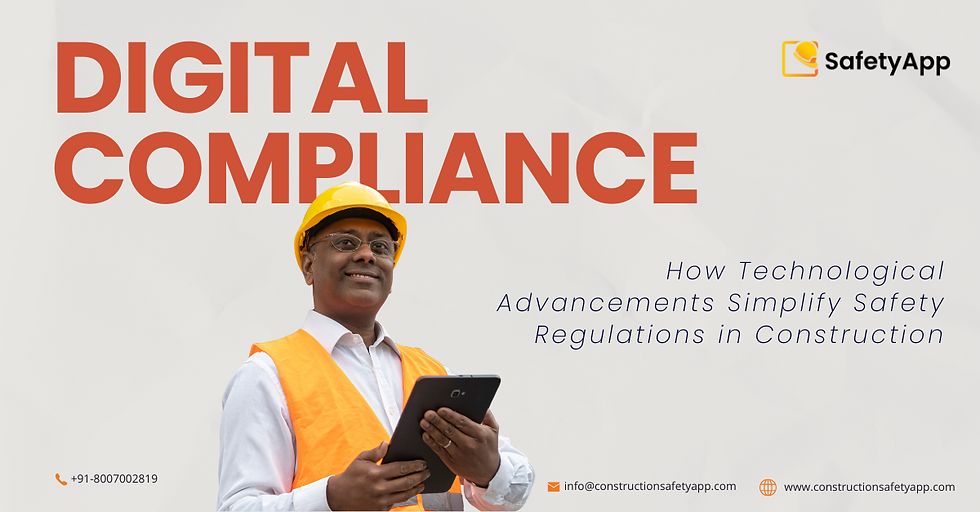Top 5 Myths of Construction Safety and How to Overcome Them
- Harshali Deshmukh
- Dec 26, 2024
- 2 min read

Construction safety is vital for any successful project, yet several myths persist that can undermine safety efforts. These misconceptions can lead to unnecessary risks, delays, and costs. By addressing these myths head-on, organizations can create safer environments and more efficient workflows. Here are five common myths about construction safety and practical ways to overcome them.
1. Safety is Too Expensive
A common misconception is that implementing safety measures adds unnecessary expenses to a project. However, the cost of accidents—including medical bills, legal fees, lost productivity, and project delays—can far exceed the investment required for preventive measures.
Organizations can debunk this myth by recognizing safety as a cost-saving strategy. Simple steps, like providing proper personal protective equipment (PPE), conducting regular inspections, and offering safety training, help reduce accidents and improve efficiency. Investing in safety is not a luxury—it’s a necessity that pays for itself over time.
2. Safety is the Responsibility of the EHS Team Alone
Another myth is that safety management falls solely on the Environmental, Health, and Safety (EHS) team. While EHS professionals play a crucial role, safety is a collective responsibility. Workers, supervisors, and management all contribute to creating a safe working environment.
To overcome this myth, foster a culture of shared accountability. This includes regular toolbox talks, job-specific training, and open communication about hazards. Empowering all team members to report unsafe conditions and actively participate in safety protocols strengthens the organization’s overall safety framework.
3. Experienced Workers Don’t Need Safety Training
Some believe experienced workers are exempt from safety training because they’ve “seen it all.” However, complacency and outdated habits can increase risks. New equipment, evolving regulations, and site-specific challenges require ongoing education for all team members, regardless of experience.
Regular refresher courses and on-site coaching ensure workers stay updated on the latest safety practices. Training tailored to specific job roles and hazards also reinforces critical safety behaviors and minimizes risks for even the most seasoned professionals.
4. Safety Slows Down Projects
It’s often assumed that safety protocols slow down progress. In reality, accidents and unsafe conditions cause far greater delays due to investigations, repairs, and potential legal implications. Safety and efficiency are not mutually exclusive.
Streamlining safety processes, such as using automated checklists, pre-task safety briefings, and real-time incident reporting tools, ensures safety protocols are integrated into daily workflows. These measures prevent accidents while keeping projects on schedule and within budget.
5. Incident Rates Are the Best Measure of Safety
Relying solely on metrics like Total Recordable Incident (TRI) rates or Lost Time Injury (LTI) rates to assess safety performance is a limited approach. These lagging indicators only reflect past incidents and don’t account for proactive measures being taken to prevent accidents.
Leading indicators, such as near-miss reporting, employee engagement in safety programs, and adherence to safety protocols, provide a more accurate picture of a project’s safety culture. Shifting focus to these proactive metrics helps organizations identify potential hazards before they lead to incidents.
Conclusion
Dispelling these myths is key to creating a safer construction industry. Safety is not an obstacle—it’s a vital part of efficient, successful project management. By fostering a culture of accountability, emphasizing continuous training, and focusing on proactive measures, construction teams can protect their workers and ensure project success. Safety doesn’t just save lives—it saves time, money, and reputations.


